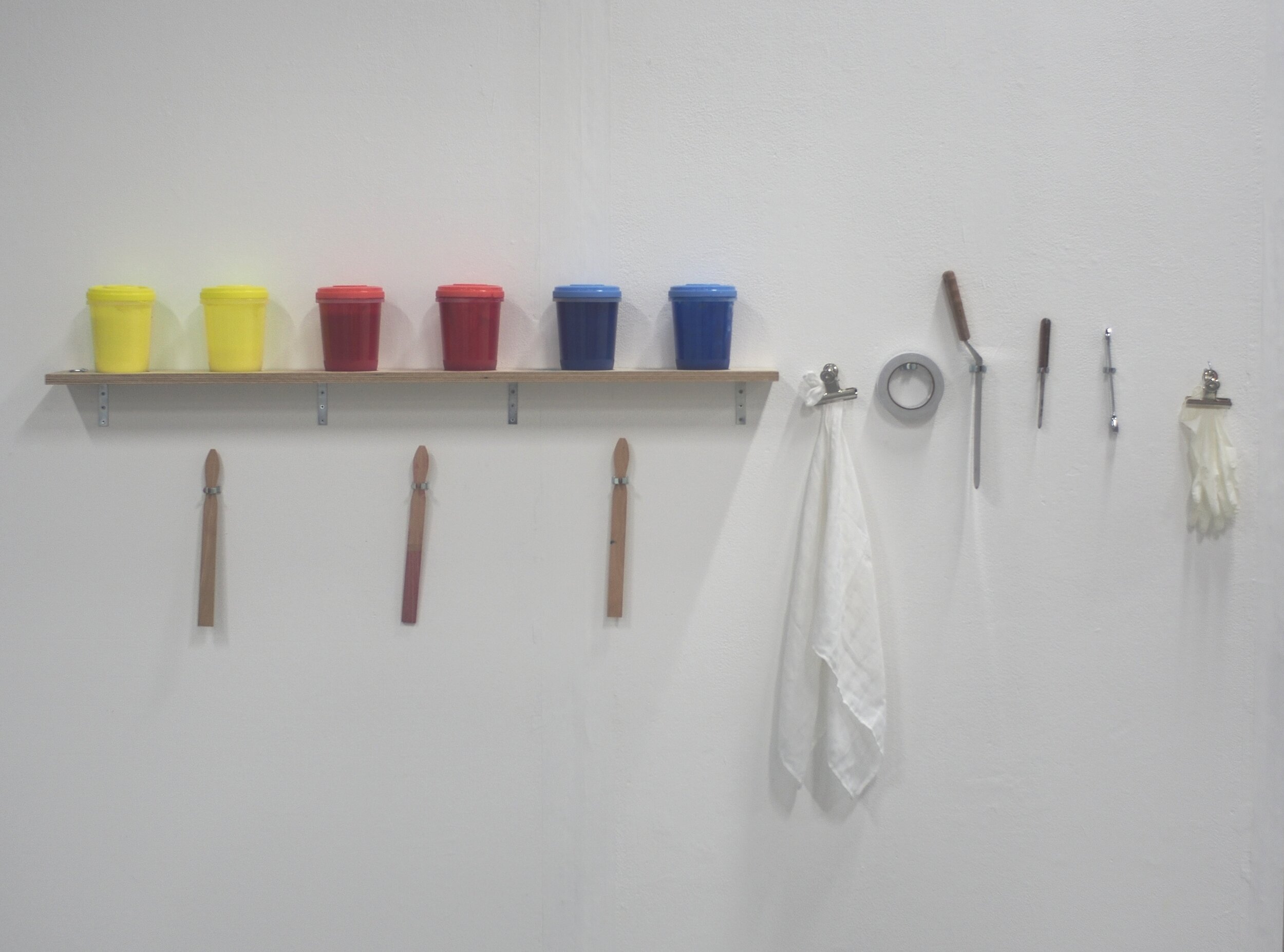Elizabeth Tomos.
The hand tends to return by a shorter path.
Below can be found information on the original project and subsequent iterations of this work.
I initially built this vertical screen-printing machine for a six-day durational performance entitled “The hand tends to return by a shorter path” which was the culmination of my MA in Fine Art at the University of Northampton. During the 6 days MA show on campus I worked 9am to 5pm daily in the exhibition space. The audience was able to see me set up and calibrate the machine, print each colour (yellow, magenta and cyan), as well as my ‘breaks’ where I ate lunch or rested whilst the ink dried. The face of the machine was built to my measurements at the furthest extent of my reach (just under a 2m arm span) and the ‘snap’ (the distance from the screen to the printed surface) was deliberately exacerbated. All of which made the printing process additionally vulnerable to pressure change and to shifts in my movements. Over the initial six-day performance, I printed on the machine ‘open screen’ (without an image). As I grew increasingly exhausted, it became less and less possible to keep the pressure required to fully ‘flood’ the screen (fill the screen with ink). The resultant prints became a record of my success (or more commonly failure) to effectively maintain pressure on the screen over the course of the performance. Each day I created one 10 metre long loop of print, first with yellow, then cyan, then magenta (the traditional colours of a colour separation print). Each print acted as a self-portrait of the day’s labour. The cyclical nature of the machine drew additional attention to the futility of this labour.
This work an exploration of the way in which the body learns, particularly when operating as tool, agent and object, as well as a commentary on the neo-liberal and capitalist construction of labour and productivity.
The work was featured in:
Future Now: 100 Contemporary Artists from The Aesthetica Art Prize (2017).
Pressing Matters Magazine, Issue 5, p.8 (2018).









Elizabeth Tomos & Charlotte Richards.
Reflections & Refractions.
The print machine was used for two collaborative performances in 2018; one in Avenue Gallery in Northampton and the other at Freerange in London (pictured). Charlotte was deliberately told nothing about how to work the machine prior to performing together. Instead, through working together side by side over the course of the performances, our bodies found ways to synchronise and economise our movements. One of the clearest moments of the way the body learns and adapts ahead of conscious thought was when, without discussion, we simultaneously crossed arms on the flooder (the tool used to ink the screen) having instinctively realised this would give us better pressure.
Elizabeth Tomos.
The death of the machine.
In 2019, the machine came to a somewhat untimely end. It was intended to be used as part of an climate activism live art action on a roadblock near James Park and Horse Guards, London. The machine was smuggled to the site in parts and an attempt was made to construct it within St James Park. The front and back were successfully assembled but sadly, despite the valiant efforts of a team of protesters, the machine never managed to be fully constructed. Before we could undertake the final construction the machine was kettled by Metropolitan police and later destroyed. In some ways it felt like a fitting end to this work given the history of printmaking as a method of political dissent; quite literally in this case, the printing press was silenced.


